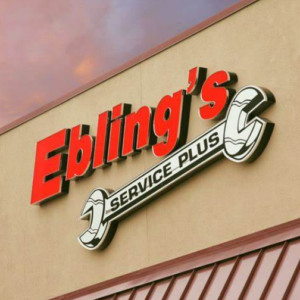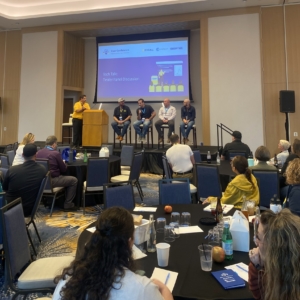Learn what’s best for your dealership.
How to Help Sales Build Long-Term Customer Relationships
How do you turn a one-time sale into a relationship that lasts over the long haul? The road to long-term customer connections is sometimes rough, but the rewards make the journey worthwhile.
Dealership Management expert Bob Clements says: “Successful sales people understand that the only way to consistently generate orders and increase business is through customer loyalty. This loyalty is built by continuing to monitor and cultivate the customer’s satisfaction.”
But long-term relationships are about more than just satisfaction. According to a Bain & Company study, “60-80% of customers who describe themselves as satisfied do not go back to do more business with the company that initially satisfied them. How can that be? Often it’s due to a lack of connection.”
Read the following tips to help pave the way to a stronger connection, leading to more profits and better job satisfaction for your sales department.
Create and Implement a Sales Process
 A sales process, if well defined, can help you repeat success over and over again. The flipside to the sales process is the buying process, except that you are seeing it from the buyer’s point of view, rather than the seller’s. This change in perspectives helps you remember that in today’s world, the buyer has “power” – and it is up to dealers to fit their process to customers’ needs, not the other way around.
A sales process, if well defined, can help you repeat success over and over again. The flipside to the sales process is the buying process, except that you are seeing it from the buyer’s point of view, rather than the seller’s. This change in perspectives helps you remember that in today’s world, the buyer has “power” – and it is up to dealers to fit their process to customers’ needs, not the other way around.
Since the buying process is so unique, copying it from another company is not the best way to proceed, though getting inspiration from another dealer can be a good start. Talk to your buyers to determine the steps and create an easy way to follow tactical opportunities. You can also take a look at the data in your CRM; what steps did the buyer take, and what touch-points did they respond to? Once you find the right formula, you can repeat and scale by entering the key stages and activities into your CRM.
Each sale also has potential for a mountain of insight. Every time your sales department closes a deal, act like Sherlock to determine what happened. For example, where did the lead come from and what type of automation campaign did the prospect receive?
Find Automation Opportunities
 Finding automation opportunities is a balancing act between identifying tasks that require the human touch, or ones that can be automated. On one hand, consumer choices are changing rapidly. 73% of retail buyers said that they prefer self-service technology such as self-check-out over interacting with an associate, according to retaildive.com and they enjoy the experience of mobile devices more and more.
Finding automation opportunities is a balancing act between identifying tasks that require the human touch, or ones that can be automated. On one hand, consumer choices are changing rapidly. 73% of retail buyers said that they prefer self-service technology such as self-check-out over interacting with an associate, according to retaildive.com and they enjoy the experience of mobile devices more and more.
On the other hand, according to Forbes.com, “Automation should be used to maximize efficiencies. However, when it comes to client relations, never compromise personal communications. Nothing is more effective when it comes to keeping your clients happy than the traditional phone call or face-to-face meeting.”
In the dealership management context, a text reminder for servicing is a great use of automation, whereas a call, in response to a complaint, is a good use of the human touch.
Track Customer Loyalty
 Net Promoter Score (NPS) is one of the leading ways to track customer loyalty. Developed by Bain & Company, the system separates customers into promoters, passives and detractors. The approach emphasizes short-cycle, closed-loop feedback. This means you get a “pulse” on what is going in your company instead of tracking it once a year and forgetting it for the rest.
Net Promoter Score (NPS) is one of the leading ways to track customer loyalty. Developed by Bain & Company, the system separates customers into promoters, passives and detractors. The approach emphasizes short-cycle, closed-loop feedback. This means you get a “pulse” on what is going in your company instead of tracking it once a year and forgetting it for the rest.
Tracking your customer loyalty throughout the relationship, and managing it along the way, can go a long way toward building those long-term customer relationships.
Plan for Future Opportunities
 Any seasoned dealer will tell you that reliability and being there when the customer needs you is essential. As a first step, you want the equipment to perform as promised. So – a friendly call or text message from your sales department after a week of ownership could be an open-ended question on if they are satisfied with their purchase.
Any seasoned dealer will tell you that reliability and being there when the customer needs you is essential. As a first step, you want the equipment to perform as promised. So – a friendly call or text message from your sales department after a week of ownership could be an open-ended question on if they are satisfied with their purchase.
Taking a “team approach” with the service department can also help you generate more income for your dealership. According to Bob Clements, “Remember that once you have received the initial order, your real work starts. This is how you ensure an exceptional customer buying experience.”
Tracking quarterly check-ins with major customers, and yearly with smaller ones, can be a great way to stay on top of issues before they start. If someone is a real “enthusiast,” they will be happy to hear from you and may even have their next purchase in mind.
Last Word
Creating meaningful connections with your clients can have a strong long-term impact on your brand. There are also several positive carry-on benefits. For example, sometimes a long-term customer will drop by the shop with a group of friends and expose them to your brand.
There is also an emotional benefit: focusing on long-term customer relationships instead of “chasing” after new ones can be more fulfilling on a personal level. So, this strategy is positive for both the journey, and the destination.




